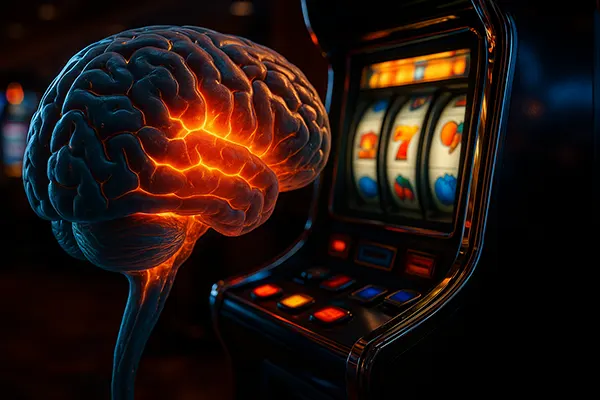
Neurogambling: How Slot Machines Affect the Dopamine System
Slot machines are not only a form of entertainment, but also a psychological mechanism capable of influencing the human brain. Their influence extends beyond simple gameplay, affecting the release and regulation of neurotransmitters—especially dopamine, the chemical responsible for reward and pleasure. Understanding how these games manipulate neurobiological responses is essential to recognising the mechanisms behind habit formation and potential addiction.
The Role of Dopamine in Reward Mechanisms
Dopamine is a neurotransmitter that plays a key role in the brain’s reward circuit. Whenever a person experiences something pleasurable—such as eating a favourite meal or receiving a compliment—dopamine levels increase, reinforcing the behaviour and encouraging repetition. In gambling, this system is intensely triggered, particularly when a player anticipates a win.
Slot machines are designed with variable ratio reinforcement schedules, meaning rewards are delivered at unpredictable intervals. This unpredictability is one of the strongest drivers of dopamine release. Even near-misses—where the outcome is close to a win—can elicit similar dopamine spikes to actual wins, thereby strengthening the player’s engagement with the game.
Over time, frequent activation of this reward system may result in neuroadaptation. The brain starts to associate the action of playing with the potential for a reward, even when losses outnumber wins. This process can significantly influence a player’s motivation and behaviour, sometimes leading to compulsive play patterns.
Why Slot Machine Design Matters
The psychological design of slot machines is highly intentional. Visual effects, sound cues, and reward animations are engineered to keep players immersed and emotionally stimulated. These stimuli are known to work in synergy with dopamine release, creating a loop of continuous play and anticipation.
Moreover, the “losses disguised as wins” tactic, where a player wins an amount smaller than the initial bet but still receives celebratory feedback, misleads the brain into interpreting a loss as a success. This further encourages continued engagement, as the dopamine system responds similarly to both true and perceived wins.
The longer players are exposed to these conditions, the more the brain learns to crave the sensations linked with gameplay. The release of dopamine becomes decoupled from genuine rewards and instead starts responding to the game’s sensory cues themselves, making quitting more difficult.
The Transition from Recreational Play to Compulsive Behaviour
While not everyone who plays slot machines develops a gambling disorder, certain individuals are more susceptible due to genetic, psychological, and environmental factors. The chronic stimulation of dopamine pathways in such individuals can accelerate the progression from casual gaming to compulsive use.
Research from 2023–2025 demonstrates a rising trend in dopamine desensitisation among regular slot players. This means that over time, the same level of gameplay triggers a weaker dopamine response, prompting players to play more intensely or for longer durations to achieve the same pleasurable effect.
This tolerance mirrors patterns observed in substance addictions. As the dopamine reward system becomes overstimulated and eventually depleted, decision-making and impulse control—regulated by the prefrontal cortex—begin to decline, further perpetuating the behaviour.
Neurological Imaging and Evidence
Functional MRI studies have shown increased activity in the ventral striatum and amygdala during slot machine play. These areas are associated with reward anticipation and emotional processing. Players with higher gambling frequency exhibited stronger neural responses in these regions when exposed to slot-related cues.
Additionally, longitudinal imaging studies confirm that repeated exposure to gambling environments changes brain connectivity. The reward system becomes hyper-responsive to gambling stimuli, while areas responsible for self-control weaken in influence. This biological shift contributes to long-term behavioural changes.
Neuroscientists now argue that pathological gambling should be viewed not only as a behavioural issue but also as a neurological condition shaped by changes in brain chemistry and structure. Awareness of these transformations is vital in creating effective prevention and treatment strategies.

Modern Regulation and Responsible Design
As understanding of dopamine’s role in gambling deepens, regulators and developers are re-evaluating the ethical responsibility of game design. Jurisdictions such as the United Kingdom and Sweden have already implemented measures to restrict the speed and sensory intensity of slot games, aiming to reduce addictive potential.
One significant regulatory change involves the limitation of auto-play features and the mandatory display of real-time loss statistics. These features aim to give players more cognitive control over their gambling behaviours and reduce dissociative states often caused by intense dopamine-driven immersion.
Additionally, gambling watchdogs are pressuring developers to use behavioural data not for personalisation of addictive features, but for identifying early signs of problematic play. Algorithmic alerts can prompt interventions or temporary blocks to protect vulnerable users.
Future Directions in Neuroethics and Game Design
There is growing advocacy for “neuroethics” in game development. This approach prioritises player wellbeing and acknowledges the biological impacts of digital gambling environments. Experts suggest integrating breaks, cooling-off periods, and transparency in win probabilities into future slot machines.
In June 2025, a collaborative report from neuroscientists and gambling commissions proposed a voluntary “dopamine impact score” to rate games based on their neurological stimulation potential. This score would help consumers and regulators make informed decisions about game safety.
Ultimately, while gambling cannot be fully stripped of risk, ethical design and responsible regulation can mitigate harm. A better grasp of how slot machines affect the dopamine system empowers both players and policymakers to navigate this form of entertainment more safely.
